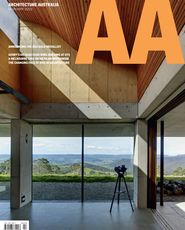1. To begin, risk is a type of exposure. To be at risk denotes an edge condition with illegality on one side and safety on the other. Risk equally identifies a state of affairs to be avoided. It demands to be located within the domain of the acceptable, where it becomes tolerable. However, risk cannot be allowed before such measures are imposed. Or so the argument goes.
Pure risk is that which cannot be risked. The stakes are too great and therefore must be circumvented. Risk will always be undone in the name of predetermined results whose pre-given sense of certainty means that the risk will be tempered in advance. It is at this precise point that the question of risk can be given another inflection. If risk must always be tempered, and with it the continual attempt to limit its possibility, is there a way to argue for the retained centrality of risk itself, retained as pure risk?
The question around risk needs to be posed differently. Is there an opening in which it is possible to take a risk with risk? Risking risk is that which would have been untempered in advance. Taking it a stage further means that such a reworking of the question of risk – the risk of risk – entails that for it to be pure it must be given the force of necessity. Could there be a sense of necessity within the presence of any risk?
2. “Necessity” is not just a term, it is a pre-given imposition. It is an obligation to act that comes from a site that is impersonal. Subjects become what they are by having to respond to the imposition of differing forms of necessity. What then is the connection between necessity and risk?
Responding to this question demands that the meaning of pure risk be clarified and a more complex sense of necessity emerge. Integral to the argument is recognizing that the term “risk” is employed to denote outcomes that can be named and identified. The elimination of risk, or the attempt to do the same, is to attempt to preclude or at least diminish the possibility of such outcomes. The management of risk is the continuous assessment of acts and occurrences that, if left unmanaged, would lead to outcomes with deleterious effects.
This particular sense of risk seeks to arrest possibilities that can be both identified and described in advance. This is the central point, allowing a further step to be taken, since it is the connection between the identification of risk and the already present understanding of its outcomes that allows for risk’s other possibility. This is the possibility that would be there once the project of pure risk is allowed. It is the possibility that attends any thinking of risk, i.e. the risk of risk. Moreover, necessity and risk are linked at the moment at which risk breaks its link to the already known.
3. Dangers are known. Threats can be named. “Risks” can be identified. Knowing, naming and processes of identification create a constellation in relation to which, perhaps as a founding act of separation, an opening without any form of pre-given determination can be situated. Such a setting is the re-emergence of risk, now within a founding act of separation in which risk is linked to what can be described as “indetermination.” Indetermination names both the possibility and the risk of risk-taking. Indeed, what now emerges is a genuine risk.
To the extent that knowledge and naming are there in advance, the structure of risk is curtailed in advance. The determination of risk imposes a set-up where results are already known. This is the management of risk. Moreover, this is the creation of risk that could only ever have been there to be managed. This is a specific structure of necessity. It would be as though necessity has given rise to a necessity. The other modality of risk takes place within a set-up marked by the necessity of indetermination. As a result necessity now gives rise to contingency.
In addition, risk has to be thought of as inextricably bound up with experimentation. To experiment is to take risks. Here necessity cannot be separated from indetermination. This is the work of pure risk where results are always contingent.
4. Of course the connection between risk, necessity and indetermination does not preclude the possibility of judgement – quite the opposite. The judgement of the effective management of risk is one that does no more than identify successes or failures within a pre-given and determined set of expectations.
Judgement is equated with that which confirms. Within this setting there is a form of necessity, namely the presence of predetermined outcomes. Risk only pertains to the success or otherwise of what has been determined in advance. However, once indetermination is retained as operative and therefore the generative element in the creation of presentations (including the generation of form), then what prevails is the inevitability of contingency.
With contingency, judgement becomes an essential element of any process of creation. Indeed, it is possible to go further and argue that judgement only arises once pure risk is operative.
The final element that needs to be introduced here is that the criteria of judgement take on a similar quality. There will be a question as to what criteria should or should not inform judgement. To the extent that the criteria remain an open site of contestation, of importance is the link between acts of creation, judgement and what can be described as the democratizing effect that arises once risk is pure and indetermination prevails. Indetermination means that decisions are contestable. Contestability demands its own conditions of possibility. Part of any account of a conception of judgement in which forms of dispute are central is the creation of a locus in which that contestation is maintained. This is the risk.
Source

Discussion
Published online: 30 Apr 2015
Words:
Andrew Benjamin
Images:
Courtesy of Andrew Benjamin.
Issue
Architecture Australia, March 2015
















